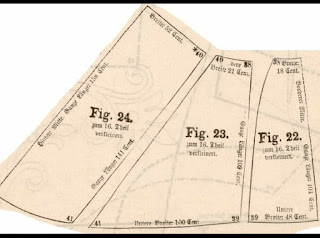Recovering a Modern Parasol

Recovering a Modern Parasol So next to velvet, moire is my favorite fabric. And this lovely stuff showed up at a local thrift store and just had to come home with me. Now this would be considered more of a bengaline than a moire but for sake of post turkey coma and commonly used terminology, any fabric with a "wood grain" pattern hot rolled into the fabric is normally called moire by the modern humans and thus will be dubbed in this article. So I cut a hole in my fabric for the top spoke, stuck it on the middle spoke, and pinched the excess fabric and draped it. Drew a chalk line with tailor's chalk and stuck it through the machine. Through sheer luck, I was able to get the seam lines to basically match up with the ribs so it looked pretty good. I then pinned the raw edges up underneath to do a raw hem. Probably should have ironed this. Part of any good creative process is staring at you creation for a good 2 hours trying to decide what to fix and what imperfections you ...



